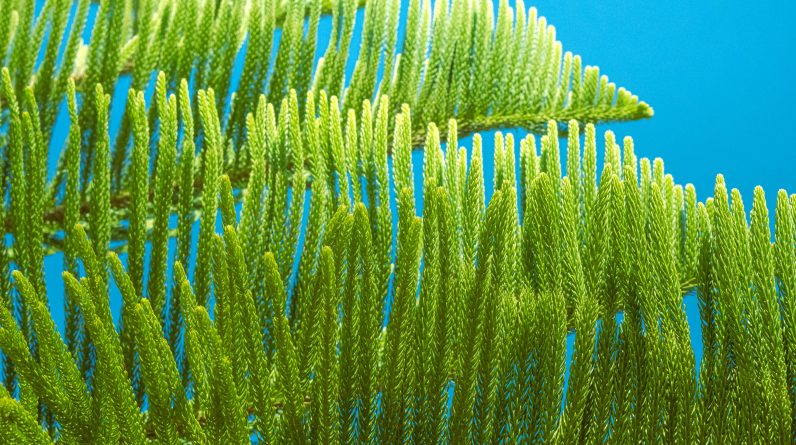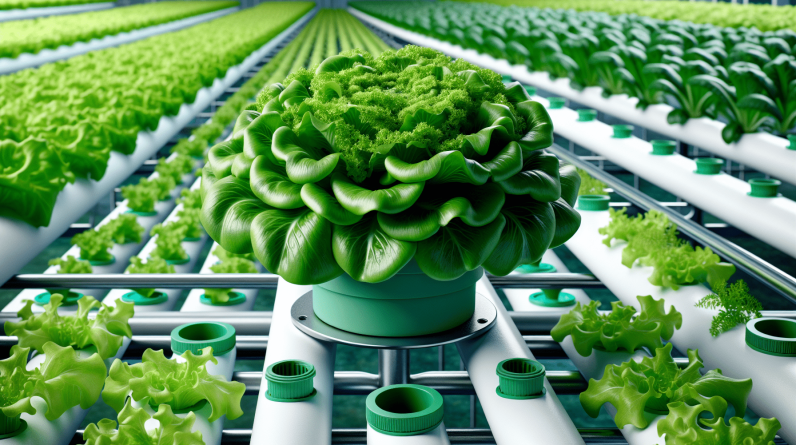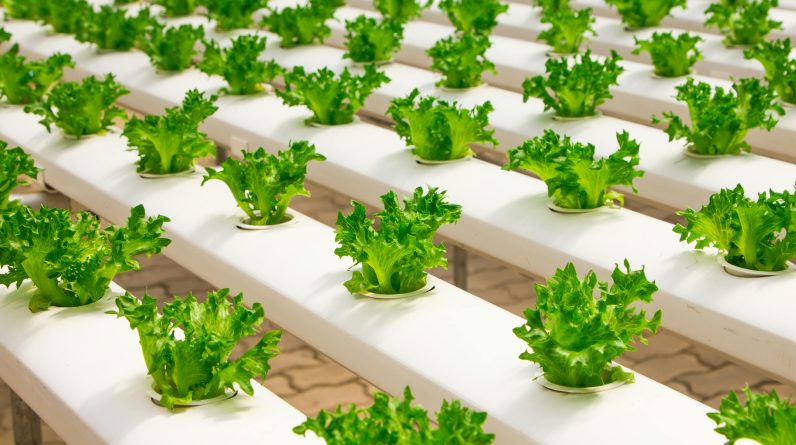
Imagine a future where crops grow without soil, using only water and nutrients to thrive. Welcome to the world of hydroponic farming, where innovative technologies are revolutionizing the way we grow our food. By harnessing the power of advanced systems, hydroponics offers a sustainable and efficient solution to traditional farming methods, presenting the possibility of increased yields, reduced water usage, and year-round crop production. In this article, we will explore some of the cutting-edge technologies that are transforming the landscape of hydroponic farming, ensuring a greener and more productive future for our agricultural industry. So, prepare to be amazed by the incredible advancements that are taking root in the world of hydroponics!
Automated Nutrient Delivery Systems
Benefits of automated nutrient delivery systems
Automated nutrient delivery systems have revolutionized the way nutrients are supplied to plants in hydroponic farming. One of the major benefits of these systems is the precise control they offer over nutrient levels. By automating the nutrient delivery process, you can ensure that your plants receive the right amount of nutrients at all times, promoting healthy growth and maximizing crop yield. Additionally, these systems help optimize resource allocation by minimizing wastage of nutrients, resulting in cost savings. With automated nutrient delivery systems, you can also save time and labor, as the system takes care of the nutrient distribution, reducing the need for manual intervention.
Different types of automated nutrient delivery systems
There are several types of automated nutrient delivery systems available in hydroponic farming. One common system is the drip irrigation system, which delivers nutrients directly to the roots of plants through a network of tubes and emitters. Another popular system is the ebb and flow system, where the nutrient solution is periodically flooded into the growing tray and then drained back into the reservoir. Other types include the aeroponic system, where the nutrient solution is misted onto the roots, and the nutrient film technique (NFT) system, where a thin film of nutrient solution flows over the roots. Each system has its own advantages and suitability for different types of crops and growing environments.
Monitoring and adjusting nutrient levels
With automated nutrient delivery systems, you can easily monitor and adjust nutrient levels to maintain optimal conditions for plant growth. These systems are equipped with sensors that continuously measure and provide data on various parameters, such as pH, electrical conductivity (EC), and nutrient concentration. By regularly monitoring these parameters, you can identify any deviations from the desired levels and make necessary adjustments to ensure the well-being of your plants. Some advanced automated nutrient delivery systems even have built-in controllers that can automatically adjust nutrient levels based on pre-set parameters, taking the guesswork out of nutrient management.
Enhanced precision and efficiency in nutrient delivery
Automated nutrient delivery systems offer enhanced precision and efficiency compared to traditional methods of nutrient application in hydroponic farming. By delivering nutrients directly to the roots of plants, these systems eliminate wastage and ensure that the plants receive the nutrients they need in the most efficient manner. Furthermore, the controlled delivery of nutrients helps prevent over-fertilization or under-fertilization, reducing the risk of nutrient imbalances and associated crop diseases. With the ability to precisely control nutrient delivery, hydroponic farmers can achieve higher crop yields and more consistent quality, leading to improved profitability and sustainability.
Vertical Farming Systems
Advantages of vertical farming in hydroponics
Vertical farming, when combined with hydroponics, offers several advantages in terms of space utilization, resource efficiency, and crop yield. One significant advantage is the ability to grow crops in stacked layers, maximizing the use of vertical space. This is particularly beneficial in urban areas where land is limited and expensive. By utilizing vertical space, hydroponic farmers can grow more crops within a smaller footprint, thus increasing their overall production capacity. Additionally, vertical farming systems provide better control over environmental factors, such as light, temperature, and humidity, allowing for optimal conditions for plant growth throughout the vertical stack.
Types of vertical farming systems
There are different types of vertical farming systems used in hydroponics, each with its own unique characteristics and suitability for specific crops. One commonly used system is the vertical tower system, where plants are grown in stacked towers that are often integrated with a recirculating nutrient solution. Another popular system is the vertical rack system, which consists of shelves or racks where plants are grown in trays or individual containers. In this system, plants can be easily moved or rotated to optimize light exposure and nutrient distribution. Yet another type is the vertical wall system, where plants are grown on wall-mounted panels, making efficient use of vertical space in indoor environments.
Space optimization and increased crop yield
Vertical farming systems excel in optimizing space and increasing crop yield, making them ideal for urban agriculture and high-density farming. By utilizing vertical space, these systems can accommodate a larger number of plants, resulting in higher crop yield per unit area compared to traditional farming methods. The ability to stack plants vertically also reduces the need for extensive land usage, making vertical farming a viable solution for areas with limited arable land. Moreover, the controlled environment provided by vertical farming systems allows for year-round cultivation and faster growth cycles, enabling multiple harvests in a shorter timeframe and maximizing the productivity of the available space.
Vertical farming in urban areas
Vertical farming has gained significant popularity in urban areas due to its ability to produce fresh and nutritious food locally, reducing the reliance on long-distance transportation and minimizing the carbon footprint associated with food production. The proximity of vertical farming systems to consumers also ensures faster delivery of produce, resulting in fresher and healthier food options. Furthermore, vertical farming can contribute to the greening of urban spaces, improving air quality and providing aesthetic value to urban environments. By integrating hydroponics into vertical farming systems, urban areas can become self-sufficient in terms of food production, promoting sustainability and enhancing food security.
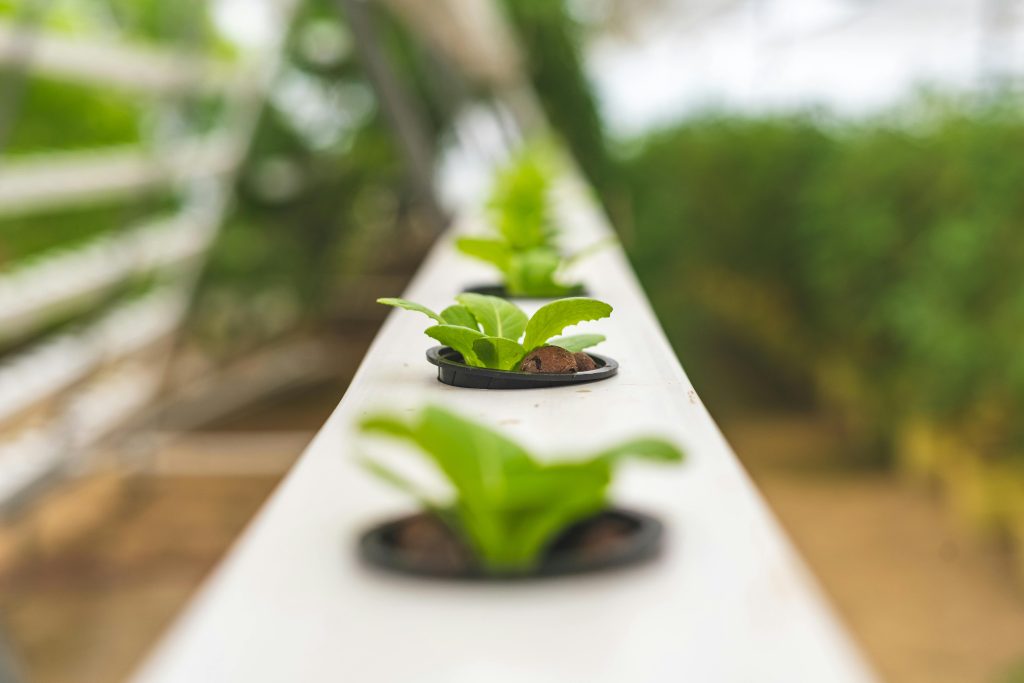
Artificial Lighting Technologies
Role of artificial lighting in hydroponic farming
Artificial lighting plays a crucial role in hydroponic farming, especially in indoor or low-light environments where natural sunlight may be insufficient. It serves as a substitute for natural sunlight, providing the necessary light energy for photosynthesis and enabling plants to grow and thrive. Artificial lighting allows hydroponic farmers to have better control over the duration, intensity, and spectrum of light received by plants, which directly influences their growth and development. By harnessing the power of artificial lighting technologies, farmers can extend the growing season, increase crop yield, and cultivate a wider range of plant species that are not native to the local climate.
Types of artificial lighting used
There are several types of artificial lighting commonly used in hydroponic farming, including fluorescent lights, high-intensity discharge (HID) lamps, and light-emitting diodes (LEDs). Fluorescent lights, such as T5 and T8 tubes, are popular for their low cost and broad light spectrum. HID lamps, such as metal halide (MH) and high-pressure sodium (HPS) lamps, are more powerful and efficient, making them suitable for larger-scale operations. However, LEDs are gaining popularity in hydroponic farming due to their energy efficiency, long lifespan, and the ability to customize the light spectrum for specific plant requirements. LED lighting systems can emit light in the wavelengths that are most beneficial for photosynthesis, resulting in optimized plant growth and reduced energy consumption.
LED lighting and its benefits
LED lighting has emerged as a game-changer in hydroponic farming, revolutionizing the way plants are illuminated. LED lights offer several benefits over traditional lighting technologies, making them an ideal choice for indoor farming. One of the significant advantages of LEDs is their energy efficiency, as they consume less power while generating the same or even higher light output compared to other lighting options. This not only reduces electricity costs but also contributes to the overall sustainability of the farming operation. LEDs also have a longer lifespan, reducing the frequency of replacement and maintenance. Additionally, LEDs can be fine-tuned to emit specific wavelengths of light, allowing for precise spectrum optimization for different stages of plant growth and specific crop requirements.
Light spectrum optimization for plant growth
The light spectrum is a critical factor in plant growth and development. Different wavelengths of light can affect various processes in plants, such as leaf expansion, stem elongation, flowering, and fruiting. With artificial lighting technologies, hydroponic farmers can optimize the light spectrum to meet the specific needs of different crops. Blue light is vital in the vegetative phase as it promotes compact and sturdy growth, while red light is essential during the flowering phase for promoting flowering and fruiting. By adjusting the ratio of blue and red light, farmers can regulate the growth and development of plants. Additionally, supplementary ultraviolet (UV) and far-red light can be used to stimulate certain physiological processes and modify the plant’s characteristics.
Smart Climate Control Systems
Importance of climate control in hydroponics
Climate control plays a crucial role in hydroponic farming, as it directly impacts the growth and productivity of plants. Maintaining optimal environmental conditions, including temperature, humidity, and carbon dioxide (CO2) levels, is essential for ensuring the health and vitality of plants. Incorrect climate conditions can lead to various problems, such as stunted growth, wilting, disease susceptibility, and reduced crop yield. By implementing smart climate control systems, hydroponic farmers can create a controlled and favorable environment that mimics the conditions required for optimal plant growth. This level of control allows for year-round cultivation, regardless of external weather conditions, maximizing crop productivity and profitability.
Automated control of temperature, humidity, and CO2 levels
Smart climate control systems in hydroponic farming automate the monitoring and adjustment of temperature, humidity, and CO2 levels, ensuring the provision of ideal conditions for plant growth. These systems are equipped with sensors that continuously measure the environmental parameters and provide real-time data to the control system. Based on the predefined setpoints, the control system adjusts various components, such as heaters, coolers, humidifiers, dehumidifiers, and CO2 generators, to maintain the desired climate conditions. By automating these processes, hydroponic farmers can eliminate manual interventions and achieve precise control over the climate, minimizing the risk of human errors and optimizing resource utilization.
Integration with weather monitoring data
Smart climate control systems can be integrated with weather monitoring data to make informed and proactive decisions regarding climate adjustments. By accessing weather forecasts and real-time weather data, the control system can anticipate changes in external conditions and make preemptive adjustments to maintain the optimal climate inside the growing environment. For example, if a heatwave is predicted, the system can proactively activate cooling mechanisms to prevent overheating of the plants. Similarly, if a cold spell is expected, the system can adjust the heating arrangements to protect the plants from frost damage. This integration with weather monitoring data enhances the efficiency and adaptability of the smart climate control system, ensuring that the plants are always provided with the most suitable climate conditions.
Optimal environmental conditions for crop growth
Smart climate control systems enable hydroponic farmers to create and maintain optimal environmental conditions for different stages of crop growth. For example, during the germination and seedling stages, higher humidity and lower temperature are favorable, promoting successful seed germination and healthy seedling development. As the plants enter the vegetative phase, a slightly lower humidity and slightly higher temperature are beneficial for robust growth. During the flowering and fruiting phases, specific temperature and humidity ranges can be maintained to stimulate flower and fruit production. By customizing the climate conditions according to the specific requirements of each crop and growth stage, hydroponic farmers can maximize the potential of their plants and achieve higher crop quality and yield.
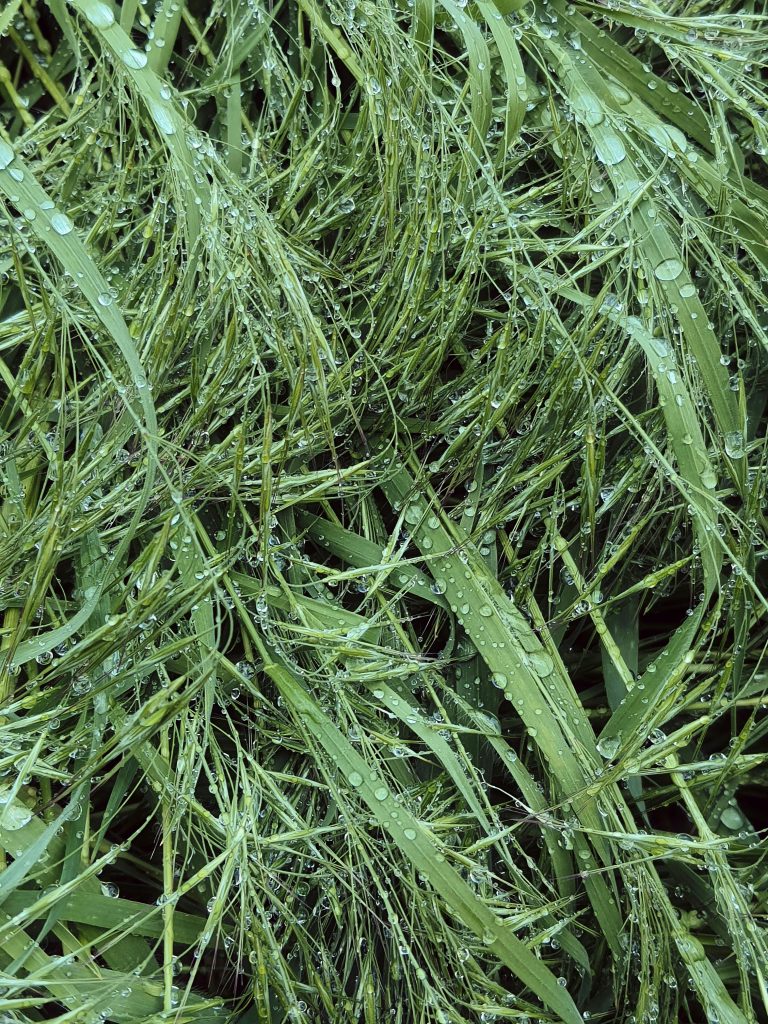
Sensor Technologies for Plant Monitoring
Using sensors to monitor plant health
Sensor technologies play a crucial role in monitoring the health and well-being of plants in hydroponic farming. These sensors are designed to measure various parameters, such as pH, electrical conductivity (EC), moisture levels, dissolved oxygen (DO), and temperature. By continuously monitoring these parameters, hydroponic farmers can gain valuable insights into the physiological status and nutrient uptake of plants. Anomalous readings or deviations from the desired ranges can indicate potential issues, such as nutrient deficiencies, imbalances, or pest infestations. By detecting these problems at an early stage, farmers can take timely corrective measures to ensure the health and productivity of their crops.
Types of sensors used in hydroponic systems
Several types of sensors are used in hydroponic systems to monitor different aspects of plant health and growth. pH sensors measure the acidity or alkalinity of the nutrient solution, ensuring that the pH remains within the optimal range for nutrient absorption. EC sensors measure the electrical conductivity of the nutrient solution, providing valuable information about nutrient concentration and salinity levels. Moisture sensors measure the moisture content in the growing medium, helping farmers maintain the right level of moisture for healthy root development. DO sensors measure the dissolved oxygen levels in the nutrient solution, ensuring adequate oxygen supply to the roots. Temperature sensors monitor the ambient temperature, helping farmers maintain the optimal temperature range for plant growth.
Real-time data collection and analysis
Sensor technologies enable real-time data collection and analysis, allowing hydroponic farmers to closely monitor the health and performance of their plants. The data collected by the sensors is transmitted to a central control system, where it is analyzed and visualized for easy interpretation. By having access to real-time data, farmers can identify any deviations or abnormalities in the sensor readings and take prompt action to rectify the issue. For example, if the pH levels in the nutrient solution are too high, indicating alkalinity, farmers can add an acid solution to bring the pH back to the desired range. Real-time data analysis empowers farmers with actionable insights and helps them make informed decisions to optimize plant health and maximize crop productivity.
Early detection of nutrient deficiencies or pests
One of the significant advantages of sensor technologies in hydroponic farming is their ability to detect nutrient deficiencies or pest infestations at an early stage. By continuously monitoring parameters like pH and EC, farmers can identify any imbalances in nutrient concentration and promptly adjust the nutrient solution accordingly. This helps prevent nutrient deficiencies that can negatively impact plant growth and yield. Similarly, sensors can detect anomalies in moisture levels, signaling potential root diseases or pest infestations. Timely detection allows farmers to take appropriate measures, such as adjusting the watering schedule or applying organic pest control methods, before the problem escalates and causes significant crop damage. Early detection through sensor technologies helps ensure crop health and minimize the need for chemical interventions.
Water Recycling and Treatment Systems
Importance of water conservation in hydroponics
Water conservation is of utmost importance in hydroponics, as it is a closed-loop system where the same water is continuously circulated and reused. Unlike traditional soil-based farming, hydroponics relies on a limited amount of water, making efficient use of this precious resource crucial. By implementing water recycling and treatment systems, hydroponic farmers can reduce water consumption, minimize wastage, and contribute to environmental sustainability. Water conservation in hydroponics helps alleviate water scarcity issues, preserve natural water sources, and ensures the long-term viability of this agriculture practice.
Water recycling methods in hydroponic farming
There are several methods used in hydroponic farming to recycle and reuse water. One common method is the use of recirculating systems, where the nutrient solution is collected and filtered after it has flowed through the growing medium or passed by the roots of the plants. The filtered nutrient solution is then reintroduced into the system, ensuring that no water is wasted. Another method is the implementation of closed-loop systems, where all excess water is collected, treated, and then reintroduced into the system, creating a continuous cycle of water use. Additionally, some hydroponic farmers utilize techniques such as condensation or dehumidification to capture and reuse water vapor, further minimizing water consumption.
Water treatment technologies for maintaining water quality
Maintaining water quality is essential in hydroponic farming, as any impurities or contaminants can negatively affect plant health and growth. Water treatment technologies are employed to ensure the purity and cleanliness of the recycled water used in hydroponics. Filtration systems, such as sediment filters and activated carbon filters, are commonly used to remove particulate matter and chemical impurities from the water. UV sterilization is another effective method for eliminating pathogens and microorganisms. Reverse osmosis (RO) systems are utilized to remove dissolved salts, minerals, and other contaminants, ensuring that the nutrient solution remains at the desired composition. Regular monitoring and periodic testing of the water quality can help hydroponic farmers identify any issues and take appropriate corrective measures.
Reducing water consumption and environmental impact
By implementing water recycling and treatment systems, hydroponic farmers can significantly reduce water consumption and minimize their environmental impact. The closed-loop nature of hydroponics allows for the reuse of water, eliminating the need for excessive irrigation and minimizing wastage. This not only conserves water but also reduces the pressure on natural water sources and the associated energy required for water extraction and distribution. Additionally, by treating the recycled water and maintaining its quality, hydroponic farmers can ensure that the plants receive clean and nutrient-rich water, promoting their health and vitality. The reduced water consumption and environmental impact make hydroponic farming a sustainable and eco-friendly alternative to traditional agricultural practices.

Nutrient Film Technique (NFT)
Overview of the Nutrient Film Technique
The Nutrient Film Technique (NFT) is a popular hydroponic system that utilizes a shallow, sloping channel to deliver a continuously flowing thin film of nutrient solution over the roots of plants. In this technique, plants are supported by a platform or growing tray with holes through which their roots are exposed to the flowing nutrient film. The excess nutrient solution is then collected and returned to the reservoir for recirculation. The continuous flow of nutrient solution ensures that the roots receive a constant supply of water and nutrients, promoting healthy growth and optimal nutrient uptake.
Advantages and disadvantages of NFT
The Nutrient Film Technique offers several advantages that make it a preferred choice for hydroponic farmers. One of the significant advantages is the efficient use of water and nutrients. The continuous flow of the thin nutrient film allows for effective nutrient absorption by the roots while minimizing wastage. Additionally, NFT requires less growing medium compared to other hydroponic systems, making it cost-effective and suitable for large-scale cultivation. The simplicity of the system also makes it relatively easy to set up and operate. However, NFT has some limitations. It is more suitable for smaller plants with shallow root systems, as larger plants may require additional support. The continuous flow of the nutrient film also makes the system vulnerable to interruptions in the power supply, which can disrupt the nutrient delivery and potentially harm the plants.
Implementation and operation of NFT systems
Implementing and operating an NFT system requires careful planning and attention to detail. The first step is to design and set up the sloping channels or growing trays where the plants will be placed. The channels should have the right gradient and dimensions to ensure a proper flow of the nutrient film. The plants are then placed in the holes or slots in the channel, ensuring that the roots are in contact with the flowing nutrient film. The nutrient solution is continuously pumped from the reservoir to the highest end of the channel and allowed to flow down towards the lowest end. The excess solution is collected and returned to the reservoir for recirculation. Regular monitoring of the nutrient solution levels, pH, and EC is essential to maintain optimal conditions for plant growth.
Optimizing nutrient flow and preventing clogging
Achieving optimal nutrient flow and preventing clogging are critical aspects of operating an NFT system successfully. The slope or gradient of the channels should be carefully adjusted to ensure a uniform and consistent flow of the nutrient film. If the slope is too steep, the nutrient solution may flow too quickly and not provide sufficient contact time with the roots. On the other hand, if the slope is too shallow, the nutrient film may become stagnant, leading to oxygen deprivation and root suffocation. Farmers must also ensure that the channels and the nutrient delivery system are clean and free from debris or blockages. Regular maintenance and periodic flushing of the system can prevent clogging and ensure the smooth operation of the NFT system. Additionally, maintaining the optimal pH and nutrient concentration in the nutrient solution is crucial to prevent mineral precipitates or scaling in the channels, which can impede the nutrient flow.



